Carbonstop help the Roots&Shoots Shanghai, showing different living carbon footprint
On the eve of Low Carbon Day, Roots&Shoots Shanghai, and Carbonstop officially signed a VIP agreement to use the carbon emission factor database. With the support of the carbon emission factor database, Roots&Shoots Shanghai, vividly displayed the carbon emissions in daily life and quantifies the "low carbon life" which has been known by the public but cannot be demonstrated with data.
July 2 is the eighth National Low Carbon Day.
Nowadays, the problem of global warming is becoming more and more familiar to the public. Greenhouse gases are the main cause of the global greenhouse effect and hence global warming.
The most important greenhouse gas in the atmosphere is carbon dioxide (CO2), which accounts for 66%. In addition to carbon dioxide, there are five major greenhouse gases: methane (CH4), nitrous oxide (N2O), chlorofluorocarbons (CFCs), perfluorocarbons (PFCs) and sulfur hexafluoride (SF6). These five gases are much less concentrated in the atmosphere than carbon dioxide, but their warming effects per unit volume range from tens to tens of thousands of times greater than carbon dioxide.
In fact, different activities in our lives directly or indirectly emit greenhouse gases. Our carbon emissions are different depending on our lifestyle choices.
How different are the results when faced with different choices?
Today we will look at two young people's daily choices...
* The unit used to calculate carbon emissions is carbon dioxide equivalent (CO2e), which translates the six major greenhouse gases into the same amount per unit volume of carbon dioxide




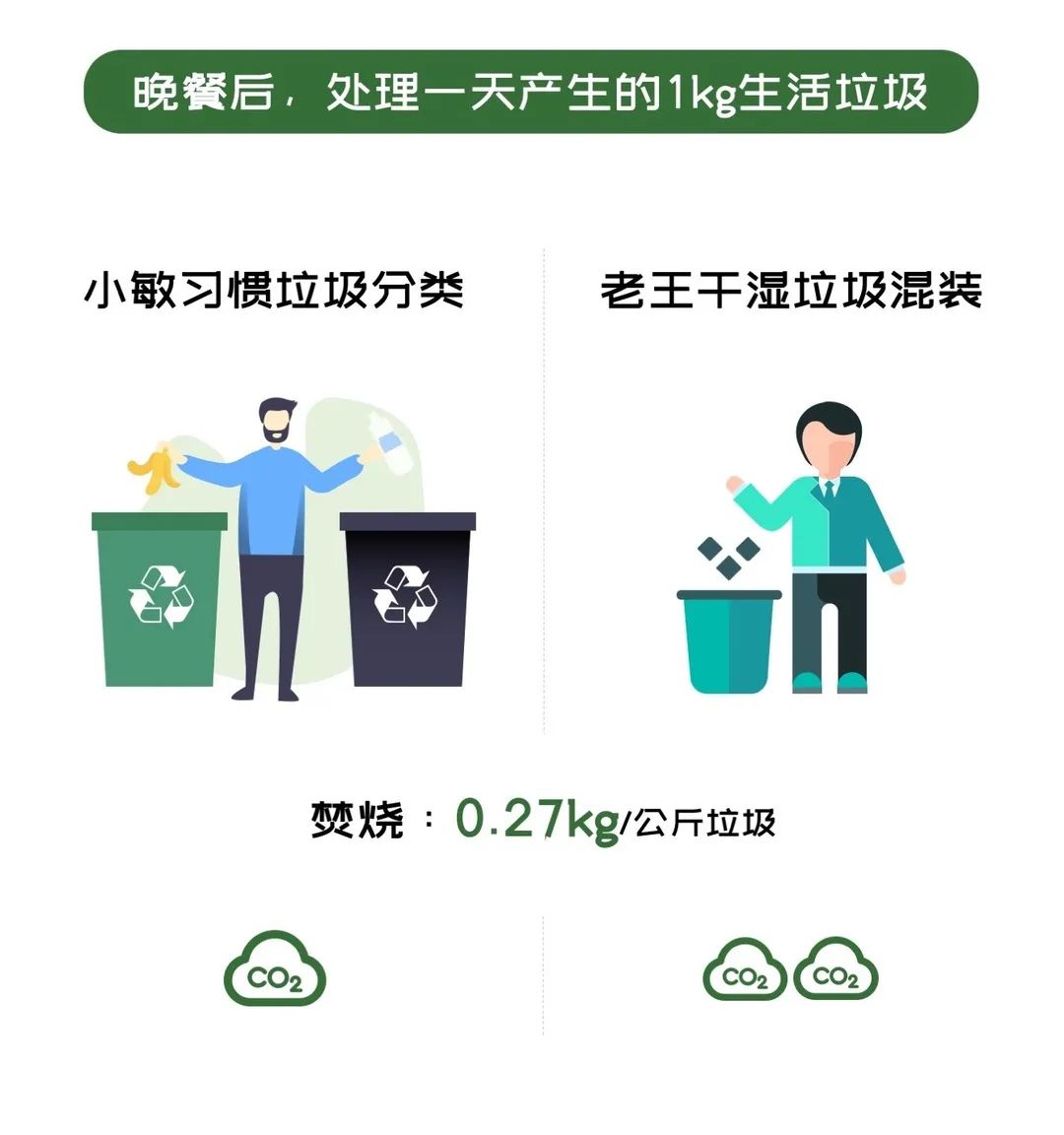
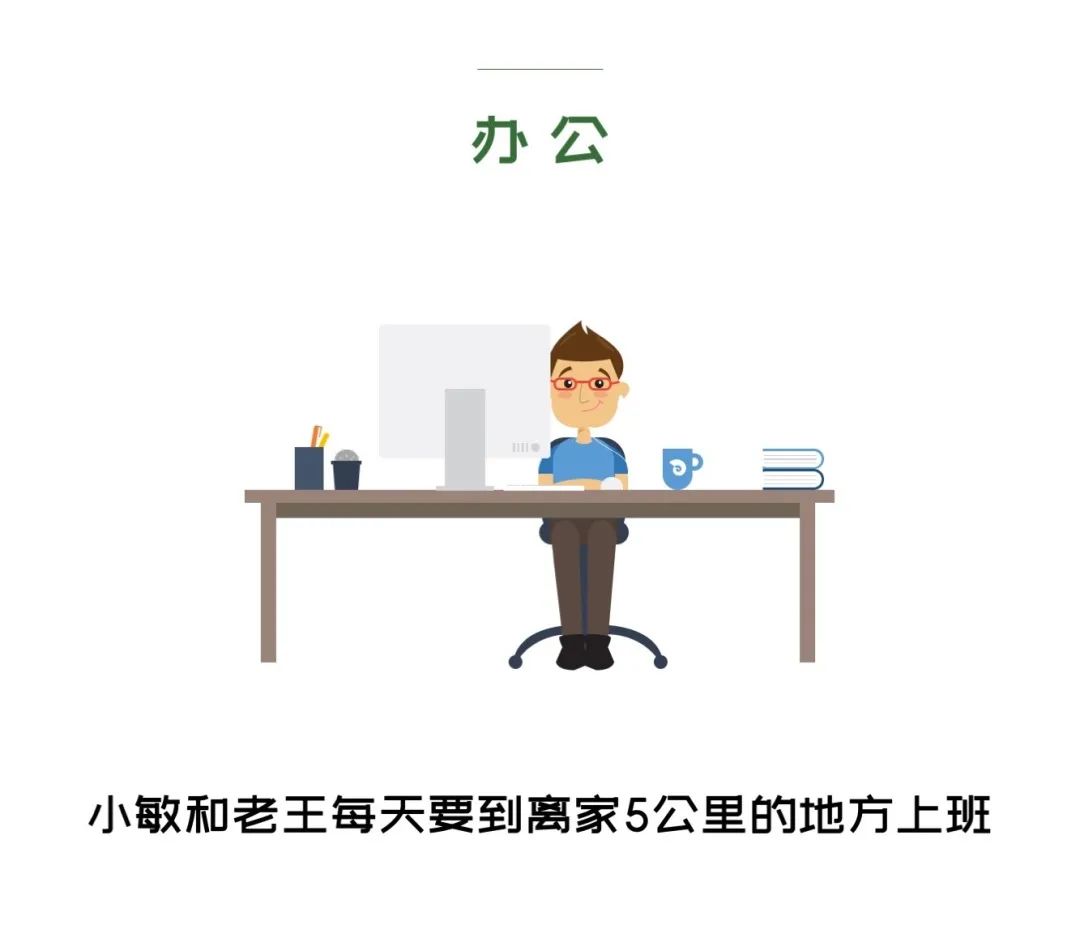
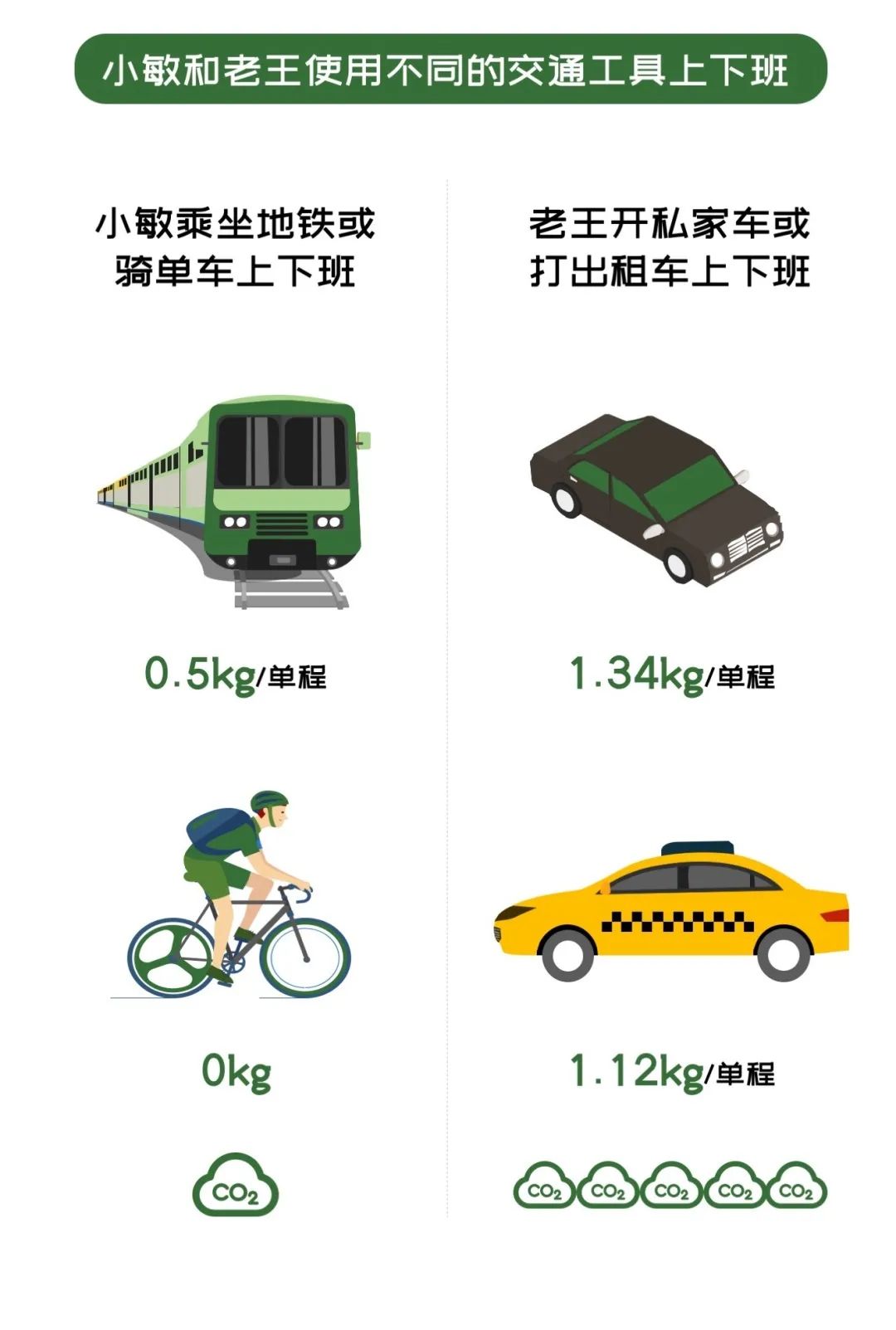
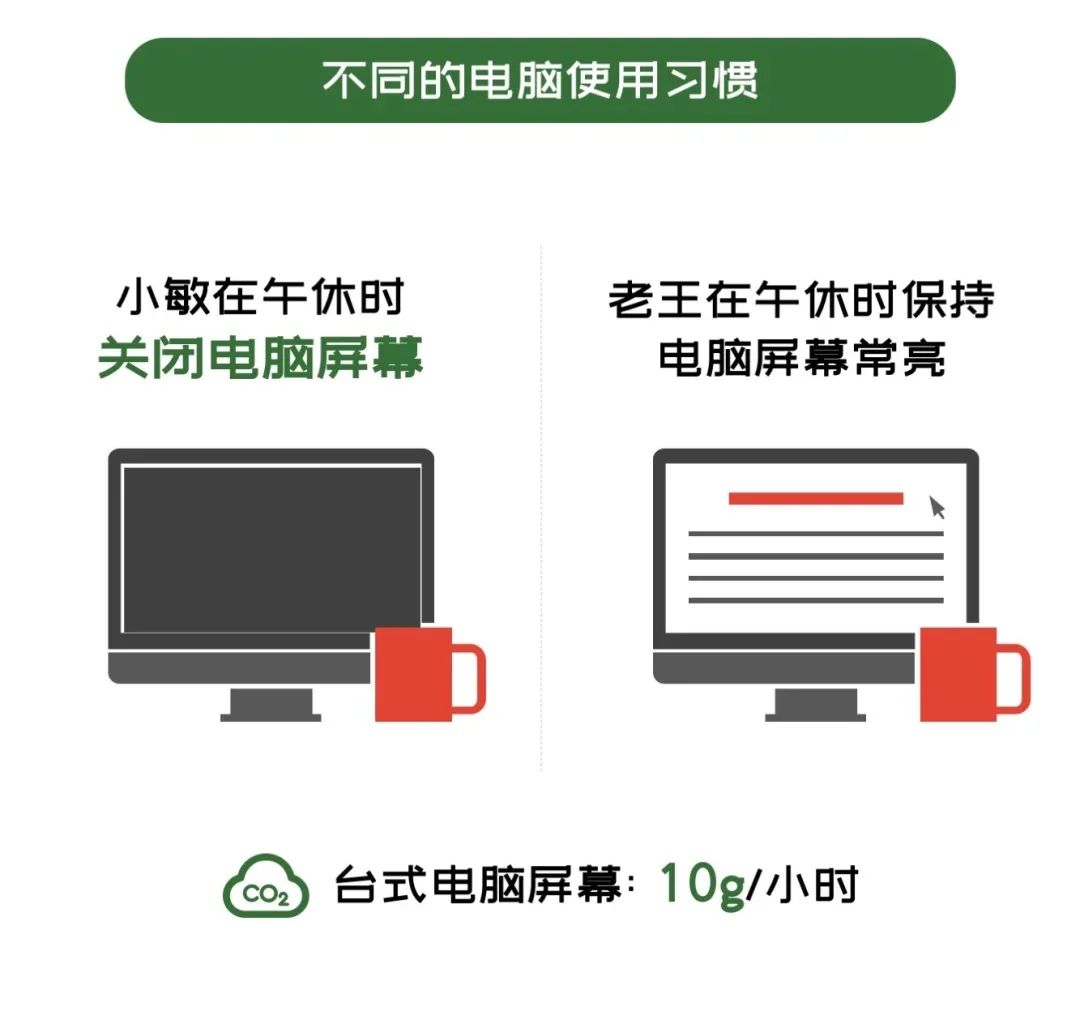
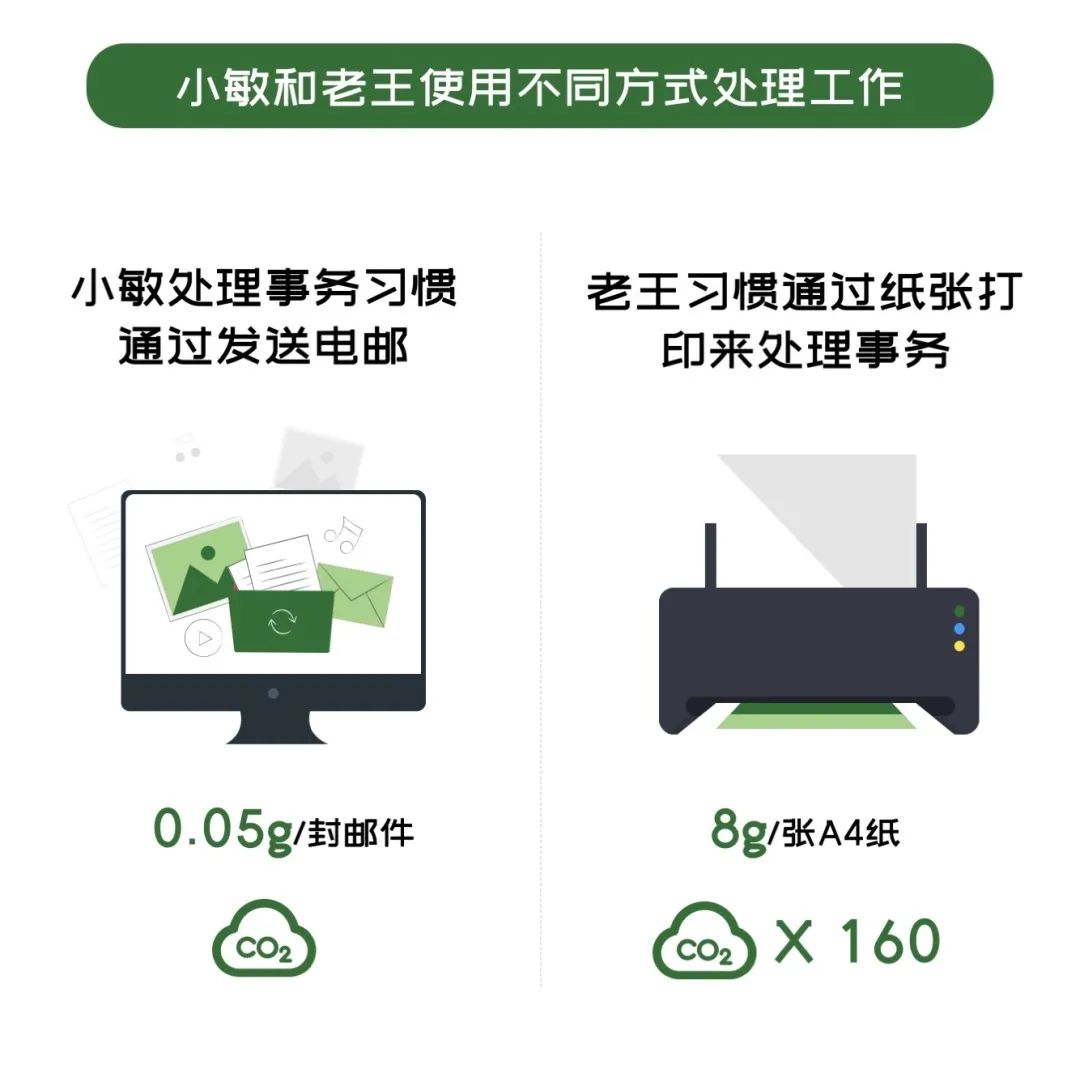

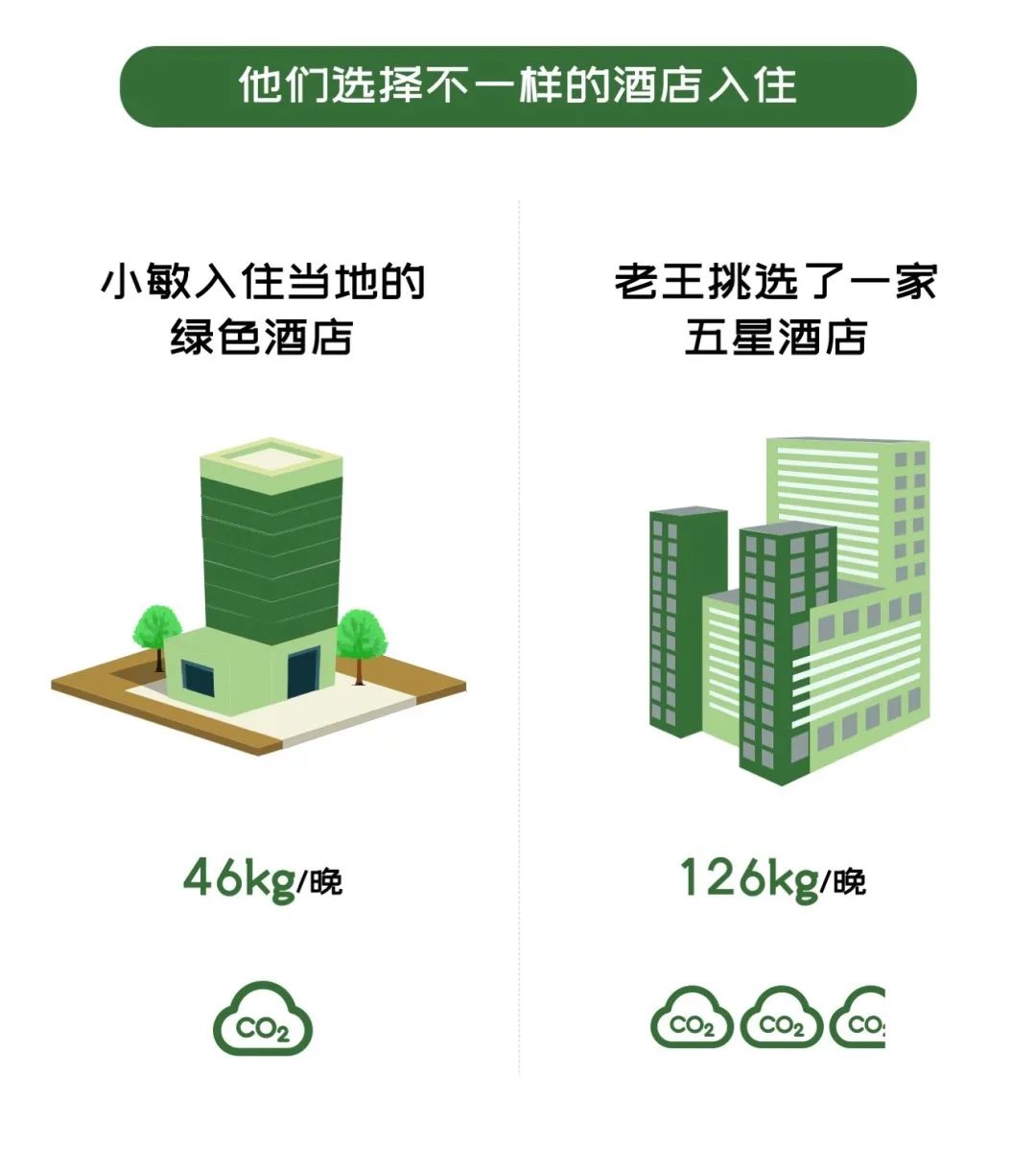

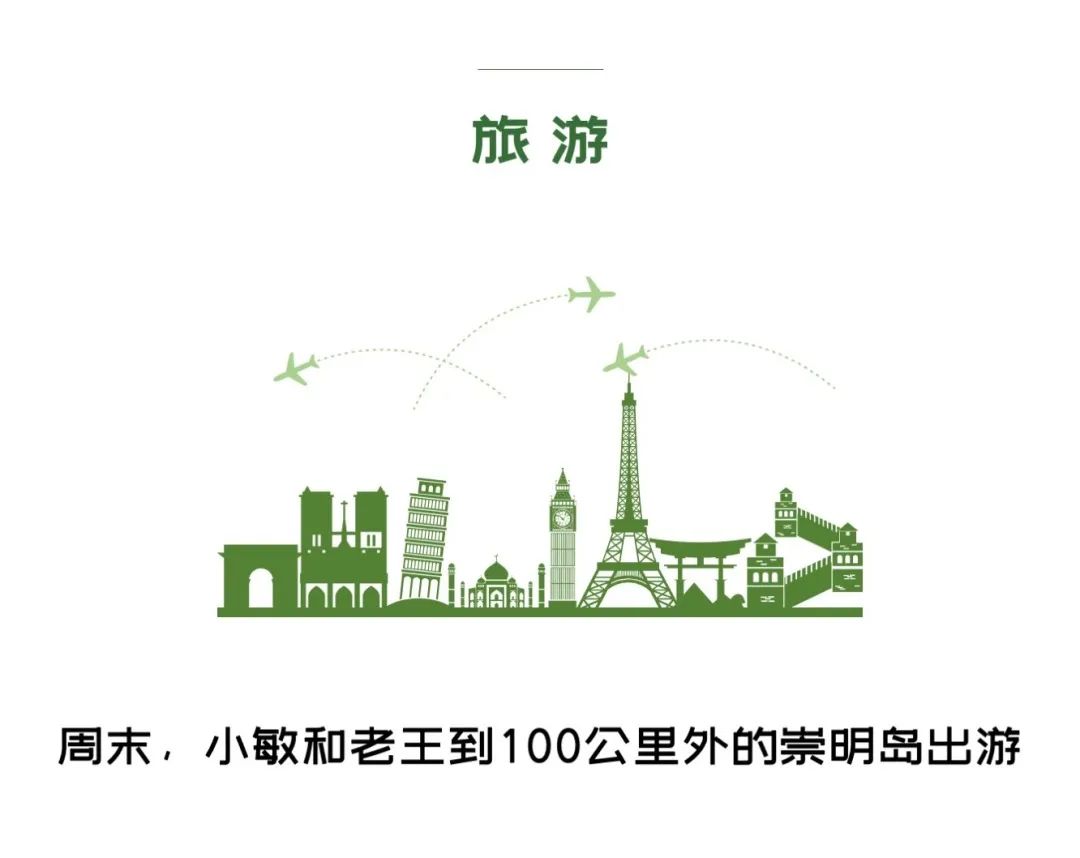


* The above data and calculation is supported by Carbonstop.
Roughly calculated, in one week, Lao Wang's carbon emission level would be about four times that of Xiao Min under these four scenarios! Lao Wang's carbon emissions (320kg) would have required about five poplar trees to offset them (based on the Million Tree Project :one poplar tree absorbing 57kg of carbon dioxide in a decade, please visit the Million Tree Project website for details).
STOP,REDUCE,OFFSET
Thesethree words are principles we can follow in our daily lives to reduce carbon dioxide emissions.
Let's take the travel scenario as an example.
Stop unnecessary carbon footprint
Try to avoid the carbon emissions we can during traveling. For example, bring kettles, tableware, cloth bags, dental utensils, etc., to reduce the consumption of disposable items.
Reduce the carbon footprint necessary to occur
For the necessary carbon emissions in travel, low-carbon behaviors should be preferred. For example, if there are two ways to travel to a tourist destination, railway travel is preferred. For short trips, choose public transport as far as possible to reduce the use of fuel cars.
Offsetting the carbon footprint that has already occurred
From the lives of Xiao Min and Lao Wang, we can see that no matter what actions we take in our daily life, we will inevitably produce more or less carbon emissions.
There are steps we can take to offset the carbon footprint that has already occurred. To achieve responsible travel, if you have to use an airplane as a means of travel, you can choose to buy carbon sequestration from the airline to offset your trip, or donate directly to a tree-planting project.
Join the Million Tree Planting Project to fight desertification together
Today, aviation alone accounts for about 2% of global greenhouse gas emissions, and that share is set to grow.
The International Civil Aviation Organization (ICAO) approved a plan in 2016 called the International Aviation Carbon Offset and Emission Reduction Program, which aims to limit new greenhouse gas emissions from the aviation industry by spending about 2 percent of its revenue on reforestation and other mitigation projects after 2020.
In fact, tourism behavior itself has exceeded the basic survival needs of human beings and belongs to a higher level of enjoyment needs. When tourists make this choice, they also bear the responsibility for the environment and climate.
Trust you to make the best environmentally friendly choice.


